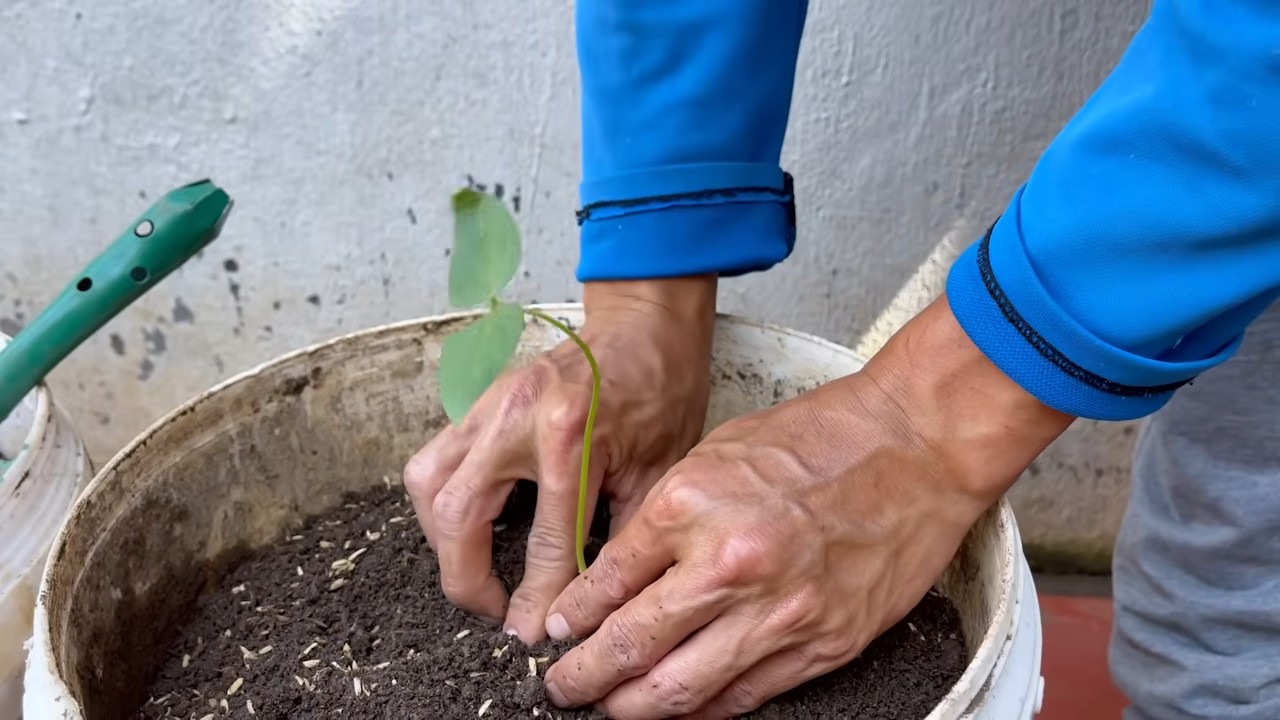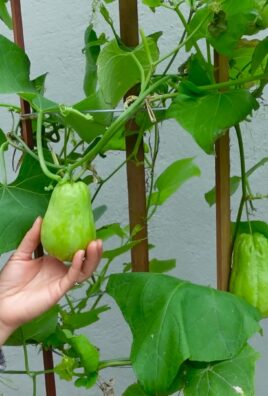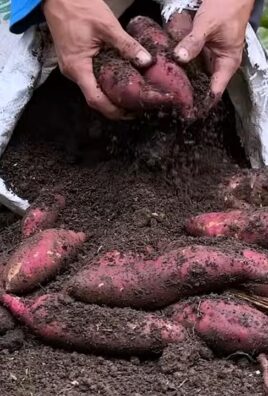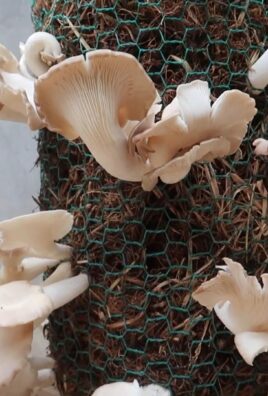Grow bigger watermelons than you ever thought possible! Imagine the look on your neighbor’s faces when they see the colossal fruit bursting from your garden. Forget those tiny, disappointing watermelons you’ve struggled with in the past. This isn’t just about growing *any* watermelon; it’s about cultivating giants, juicy and sweet, right in your own backyard.
For centuries, watermelons have been symbols of summer abundance and shared joy, from ancient Egyptian tombs where they were placed as provisions for the afterlife, to the vibrant celebrations of harvest festivals around the world. But let’s be honest, sometimes our modern gardens don’t quite deliver on that promise of abundance. That’s where these DIY tricks come in!
I know, I know, you’re probably thinking, “Growing massive watermelons sounds complicated!” But trust me, it doesn’t have to be. I’m going to share some simple, yet incredibly effective, DIY hacks that will transform your watermelon growing game. These aren’t just random tips; they’re tried-and-true methods that I’ve personally used to grow bigger watermelons year after year. Whether you’re a seasoned gardener or just starting out, these techniques will help you unlock the secrets to watermelon success. Get ready to impress your friends and family with watermelons so big, they’ll need a wheelbarrow to carry them!

Watermelon Growth Hack: How to Harvest Giant Fruits!
Hey folks, I love watermelons! And I love harvesting giant watermelons from my own garden even more. Over the years, I’ve learned a few tips and tricks that I’d like to share with you, so you too can soon be enjoying record-breaking watermelons. Don’t worry, it’s not as hard as it sounds!
Here’s an overview of what we’ll do to get your watermelons really big:
- Choosing the right variety: Not all watermelons are the same. Some varieties are naturally larger than others.
- Preparing the soil: Watermelons are hungry! We need to make sure the soil is rich in nutrients.
- Planting correctly: Spacing is important so the plants have enough room to grow.
- Watering: Watermelons need a lot of water, especially during fruit formation.
- Fertilizing: Regular fertilizing helps the plants stay strong and healthy.
- Pollination: We need to ensure the flowers are properly pollinated.
- Thinning the fruit: Fewer fruits mean bigger fruits!
- Protection from pests and diseases: We don’t want our hard-earned melons to be eaten by pests.
- Recognizing the ripe fruit: The right time to harvest is crucial.
Soil Preparation: The Be-All and End-All for Giant Watermelons
The soil is the foundation for every successful harvest, and it’s no different with watermelons. They need well-draining, sandy loam soil with a pH between 6.0 and 6.8. But don’t worry, if your soil isn’t perfect, we can improve it!
- Test the soil: Before we get started, we should test the soil’s pH. You can buy a soil test kit at a garden center or send a soil sample to a lab.
- Add compost: Compost is worth its weight in gold! It improves soil structure, retains moisture, and provides nutrients. I always mix a generous amount of compost into the soil before planting watermelons.
- Fertilize: Watermelons are heavy feeders, meaning they need a lot of nutrients. I like to use an organic fertilizer with high phosphorus and potassium content. Phosphorus promotes root growth, and potassium promotes fruit formation.
- Loosen the soil: Watermelons need loose soil so their roots can grow well. I dig over the soil and loosen it with a digging fork.
Choosing the Right Variety: The Key to Success
There are countless watermelon varieties, but not all are equally suited for producing giant fruits. Here are some varieties I can recommend:
- Carolina Cross: This variety is known for producing extremely large fruits. Some have weighed over 100 kg!
- Moon and Stars: A beautiful variety with a dark green rind and yellow spots. It can also get very large.
- Black Diamond: A classic variety with a dark green rind and red flesh. It is robust and productive.
Sowing and Planting: The Right Start
Watermelons are sensitive to frost, so you should only plant them after the last frost. You can either sow the seeds directly into the bed or start them in pots.
- Starting indoors (optional): If you live in a region with a short summer, I recommend starting the seeds indoors. Sow the seeds in pots about 4-6 weeks before the last frost.
- Direct sowing: If you want to sow the seeds directly into the bed, wait until the soil is warm (at least 18°C). Sow the seeds about 2-3 cm deep and keep the soil moist.
- Plant spacing: Watermelons need a lot of space! Plant the seedlings or sow the seeds at a distance of at least 1.5 meters.
- Mulching: Mulching helps to keep the soil moist, suppress weeds, and regulate soil temperature. I like to use straw or wood chips as mulch.
Watering: Thirsty Plants
Watermelons need a lot of water, especially during fruit formation. Make sure to water the soil regularly, but avoid waterlogging.
- Water regularly: Water the plants regularly, especially in dry weather.
- Water deeply: Water deeply so that the water reaches the roots.
- Water in the morning: It’s best to water in the morning so the leaves have time to dry before the sun comes up. This helps prevent fungal diseases.
- Drip irrigation: Drip irrigation is ideal for watermelons because it delivers water directly to the roots and keeps the leaves dry.
Fertilizing: Nutrients for Growth and Fruit Production
Watermelons need regular fertilization to stay strong and healthy and produce large fruits.
- Starter fertilizer: After planting or sowing, apply a starter fertilizer with a high phosphorus content to promote root growth.
- Regular fertilization: During the growing season, fertilize every 2-3 weeks with a balanced fertilizer.
- Potassium-focused fertilization: Once the fruits start to grow, switch to a potassium-focused fertilizer to promote fruit formation.
- Organic fertilizers: I prefer organic fertilizers like compost tea or comfrey tea. They are gentle on the environment and provide the plants with important nutrients.
Pollination: Help for the Bees
Watermelons depend on pollination by bees and other insects. If you don’t have enough bees in your garden, you can also hand-pollinate the flowers.
- Bee-friendly garden: Plant bee-friendly flowers in your garden to attract bees.
- Hand pollination: If you don’t have enough bees, you can pollinate the flowers by hand. Use a brush to collect pollen from the male flowers and transfer it to the female flowers. You can recognize the female flowers by the small fruit at the base of the blossom.
- Pollinate early in the morning: It’s best to pollinate the flowers early in the morning when the pollen is still fresh.
Thinning the Fruit: Less is More
If you want to harvest giant watermelons, you have to thin the fruit. This means you only allow one or two fruits per plant.
- Remove weak fruits: Remove all weak or damaged fruits.
- Only one or two fruits per plant: Let only one or two fruits grow per plant.
- Select the strongest fruit: Choose the strongest and healthiest fruit and remove all others.
Protection from Pests and Diseases: Healthy Plants, Healthy Fruits
Watermelons can be affected by various pests and diseases. Watch for signs of problems and act quickly to minimize damage.
Prevent diseases: Ensure good ventilation and avoid waterlogging to prevent fungal diseases.
Regular inspection: Check the plants regularly for pests and diseases.
Control pests: Control pests with natural remedies like neem oil or insecticidal soap.

Conclusion
So, there you have it! Mastering the art of growing bigger watermelons isn’t some unattainable dream reserved for professional farmers. It’s a tangible goal within reach for any home gardener willing to invest a little time, effort, and, most importantly, the right techniques. We’ve walked through the key steps, from selecting the right variety and preparing the soil to meticulous pruning and strategic watering. Remember, patience is key. You won’t see overnight transformations, but with consistent care and attention, you’ll be amazed at the difference these methods can make.
The beauty of this approach is its adaptability. Feel free to experiment with different fertilizers, pollination techniques, or even companion planting strategies to find what works best for your specific climate and soil conditions. Perhaps you’ll discover that adding a specific type of compost tea gives your watermelons an extra boost, or that strategically placing reflective mulch maximizes sunlight exposure. The possibilities are endless!
Don’t be afraid to deviate from the suggested methods slightly. For instance, if you live in a particularly hot climate, you might need to provide extra shade during the hottest part of the day to prevent sunscald. Or, if your soil is naturally rich in nutrients, you might need to adjust the fertilizer schedule accordingly. The key is to observe your plants closely and respond to their needs.
Growing bigger watermelons is more than just about size; it’s about the satisfaction of nurturing something from seed to fruition, of connecting with nature, and of enjoying the unparalleled taste of a homegrown, juicy watermelon. It’s a rewarding experience that brings a sense of accomplishment and a delicious treat to share with family and friends.
We strongly encourage you to give these techniques a try. Start small, perhaps with just a few plants, and gradually expand your watermelon patch as you gain confidence and experience. The journey of growing bigger watermelons is a learning process, and every season brings new insights and opportunities for improvement.
And most importantly, we want to hear about your experiences! Share your successes, your challenges, and your tips in the comments below. Let’s create a community of watermelon enthusiasts who are passionate about growing the biggest and best watermelons possible. Your insights could be invaluable to other gardeners who are just starting out. So, grab your gardening gloves, get your hands dirty, and embark on the exciting adventure of growing bigger watermelons. Happy gardening!
Frequently Asked Questions
What is the best watermelon variety for growing large fruits?
Choosing the right variety is crucial for success. While personal preference plays a role in taste, some varieties are genetically predisposed to grow larger than others. ‘Carolina Cross’ is a classic choice known for producing exceptionally large watermelons, often exceeding 100 pounds. ‘Charleston Gray’ is another popular option, offering good size and excellent flavor. ‘Black Diamond’ is a dark-skinned variety that can also grow quite large. Research the specific growing requirements of each variety to ensure it’s well-suited to your climate and growing conditions. Consider factors like disease resistance and days to maturity when making your selection. Don’t be afraid to experiment with different varieties to find the one that performs best in your garden.
How important is soil preparation for growing bigger watermelons?
Soil preparation is absolutely essential. Watermelons are heavy feeders and require nutrient-rich, well-draining soil to thrive. Before planting, amend your soil with plenty of organic matter, such as compost, well-rotted manure, or leaf mold. This will improve soil structure, drainage, and fertility. Watermelons prefer a slightly acidic soil pH, ideally between 6.0 and 6.8. You can test your soil pH using a home testing kit or by sending a sample to a local agricultural extension office. If your soil is too alkaline, you can lower the pH by adding sulfur or peat moss. Ensure the soil is loose and well-aerated to allow for proper root development. Consider creating raised beds or mounds to improve drainage, especially in areas with heavy clay soil.
How often should I water my watermelon plants?
Watermelons need consistent moisture, especially during fruit development. Water deeply and regularly, aiming to keep the soil consistently moist but not waterlogged. The frequency of watering will depend on your climate, soil type, and the age of the plants. Young seedlings need more frequent watering than established plants. During hot, dry weather, you may need to water daily. Use a soaker hose or drip irrigation to deliver water directly to the roots, minimizing water loss through evaporation and reducing the risk of fungal diseases. Avoid overhead watering, as this can wet the foliage and create a favorable environment for disease. As the watermelons ripen, you can gradually reduce the amount of watering to improve their sweetness.
What is the best fertilizer for growing bigger watermelons?
Watermelons benefit from a balanced fertilizer regime. Start with a fertilizer high in nitrogen during the early stages of growth to promote vigorous vine development. Once the plants begin to flower, switch to a fertilizer higher in phosphorus and potassium to support fruit production. Phosphorus is essential for root development and flowering, while potassium is crucial for fruit size and sweetness. You can use a granular fertilizer or a liquid fertilizer. If using a granular fertilizer, apply it according to the package directions, being careful not to over-fertilize. Liquid fertilizers can be applied more frequently, but at a lower concentration. Consider supplementing with organic fertilizers, such as compost tea or fish emulsion, to provide additional nutrients and beneficial microbes.
How do I prevent pests and diseases from affecting my watermelon crop?
Pest and disease management is crucial for a successful watermelon harvest. Common pests that can affect watermelons include aphids, squash bugs, and vine borers. Regularly inspect your plants for signs of infestation and take action promptly. You can use insecticidal soap, neem oil, or other organic pesticides to control pests. Row covers can also be used to protect young plants from pests. Common diseases that can affect watermelons include powdery mildew, fusarium wilt, and anthracnose. Choose disease-resistant varieties whenever possible. Practice good sanitation by removing any diseased leaves or vines. Ensure good air circulation around the plants to reduce humidity. Apply fungicides preventatively if necessary. Crop rotation can also help to prevent soilborne diseases.
How do I know when my watermelon is ripe?
Determining when a watermelon is ripe can be tricky, but there are several indicators to look for. The tendril closest to the fruit should be brown and dry. The spot where the watermelon rests on the ground, known as the ground spot, should be yellow or cream-colored. The watermelon should sound hollow when you thump it. The skin should be dull rather than shiny. These are general guidelines, and the specific indicators may vary slightly depending on the variety. With practice, you’ll develop a feel for when your watermelons are perfectly ripe.
Can I grow watermelons in containers?
Yes, you can grow watermelons in containers, but it requires careful planning and attention. Choose a large container, at least 20 gallons in size, to accommodate the plant’s extensive root system. Use a high-quality potting mix that is well-draining and nutrient-rich. Select a compact or bush-type watermelon variety that is better suited for container growing. Provide adequate support for the vines, such as a trellis or stake. Water regularly and fertilize frequently, as container-grown plants tend to dry out and deplete nutrients more quickly. Place the container in a sunny location that receives at least 6-8 hours of direct sunlight per day. Be aware that container-grown watermelons may not grow as large as those grown in the ground.
How can I improve pollination for my watermelon plants?
Watermelons require pollination to set fruit. If you’re not seeing many bees or other pollinators in your garden, you may need to hand-pollinate your plants. To hand-pollinate, use a small paintbrush to transfer pollen from the male flowers to the female flowers. Male flowers have a long, thin stem, while female flowers have a small, immature watermelon at the base. Pollinate in the morning, when the pollen is most viable. You can also attract more pollinators to your garden by planting flowers that are rich in nectar and pollen, such as sunflowers, zinnias, and lavender. Avoid using pesticides that can harm pollinators.




Leave a Comment